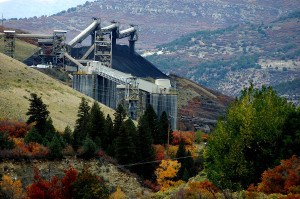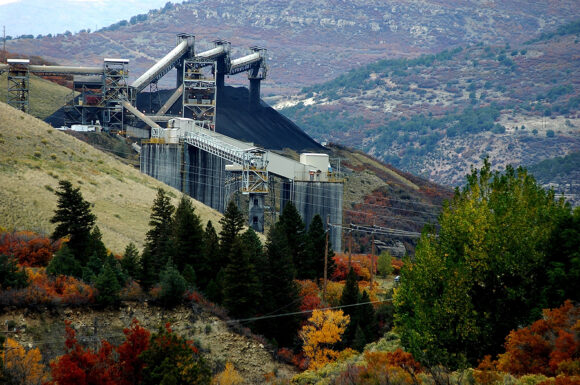Assistant Secretary of Labor for Mine Safety and Health Joseph A. Main told members at the annual convention of the National Stone, Sand and Gravel Association in Baltimore today that mining industry improvements in the past five years have laid the foundation for better protections for miners. “We are seeing significant reductions in chronic violators, improved industry compliance, and successful implementation of standards in metal and nonmetal mining,” he said.
Main was quick to add that, while metal and nonmetal mining had historically low fatality and injury rates in 2011, 2012 and FY 2013, increases in metal and nonmetal deaths since October 2013 are a matter of great concern. MSHA is working closely with the industry to reverse this trend.
“The most important measure of our progress is how many miners go home at the end of each shift safe and healthy,” he said. Main noted that 42 miners died in mining accidents in 2014, with 16 deaths at coal mines, the lowest number ever recorded. At the same time, there were 26 deaths at metal and nonmetal mines in 2014, an increase from the previous year and part of a disturbing trend that saw 38 fatalities beginning in October 2013.
MSHA has responded to this spike in fatalities by stepping up enforcement focused on violations commonly associated with mining deaths. It also has intensified its outreach and education, including “walk and talks” with miners and operators and wide dissemination of best practices and other information. The agency’s coal inspectors and educational field personnel are engaged in this effort, as are many industry representatives.
To further address safety concerns, MSHA recently launched a new web tool for mine operators, miners, MSHA and others to track each mine’s compliance with the “Rules to Live By” standards which are frequently cited following mining deaths. The online tool automatically flags a mine’s violation rate if it exceeds the national average. Violations of the “Rules to Live By” standards were cited following many of the recent deaths at metal and nonmetal mines.
“During the past five years, we have worked hard at MSHA to retool mine safety and health,” Main said.
He shared the results of these actions:
- In 2014, citations and orders issued to metal and nonmetal mine operators rose slightly, but in a five-year period, they dropped 20 percent from 73,713 in 2010 to 58,953 in 2014.
- From 2010 to 2014, there was a 30 percent drop in significant and substantial violations among the top 200 metal and nonmetal and coal mines ranked by number of S&S issuances.
- MSHA has conducted nearly 880 targeted impact inspections at mines with compliance issues; inspectors are successfully pinpointing safety and health problems, and mine operators are making improvements more quickly.
- The Department of Labor filed 49 discrimination complaints in 2014, the most in any year in MSHA history, and at least 45 actions for temporary reinstatement, the second highest number ever, exceeded only by 2012, when 47 were filed.
- MSHA successfully reduced its backlog of contested citations and orders from a high of approximately 89,000 at the end of 2010 to approximately 27,500 cases four years later, or a reduction of almost 70 percent.
- The revised Pattern of Violations enforcement program has substantially reduced the number of problem mines, led to significant improvements of mines’ safety records and reduced the overall high violation rates found prior to 2010 reforms.
- The agency began a stakeholder outreach initiative by holding quarterly conference calls with trainers across the nation, allowing the agency to exchange valuable information with them.
Engagement with, and outreach to the mining community has been a central component of the agency’s approach, and this work with the NSSGA and other stakeholders has led to a number of mine safety improvements, noted Main. He and members of his staff regularly travel to see mine operations first hand and meet with industry stakeholders, miners and operators. The NSSGA has been an active participant in many of these meetings, including a roundtable last October hosted by Secretary of Labor Thomas E. Perez. Discussion points at that meeting included safety and health issues and ways the department could assist the metal and nonmetal industry with its training, recruiting and employment needs.
Last month, the NSSGA participated in a stakeholder meeting to address additional ways to respond to the increased mine deaths.
Source: U.S. Department of Labor
Was this article valuable?
Here are more articles you may enjoy.


 Singer’s Elliott Sued by PE Firm in Escalating Fight Over Money
Singer’s Elliott Sued by PE Firm in Escalating Fight Over Money  The Return Period for An LA Wildfire-Scale Event May Be Shorter Than You Think
The Return Period for An LA Wildfire-Scale Event May Be Shorter Than You Think  Cyber Breach Affected 750,000 Canadian Investors, Regulator Says
Cyber Breach Affected 750,000 Canadian Investors, Regulator Says  First Brands Judge Approves Examiner to Probe Fraud Allegations
First Brands Judge Approves Examiner to Probe Fraud Allegations 